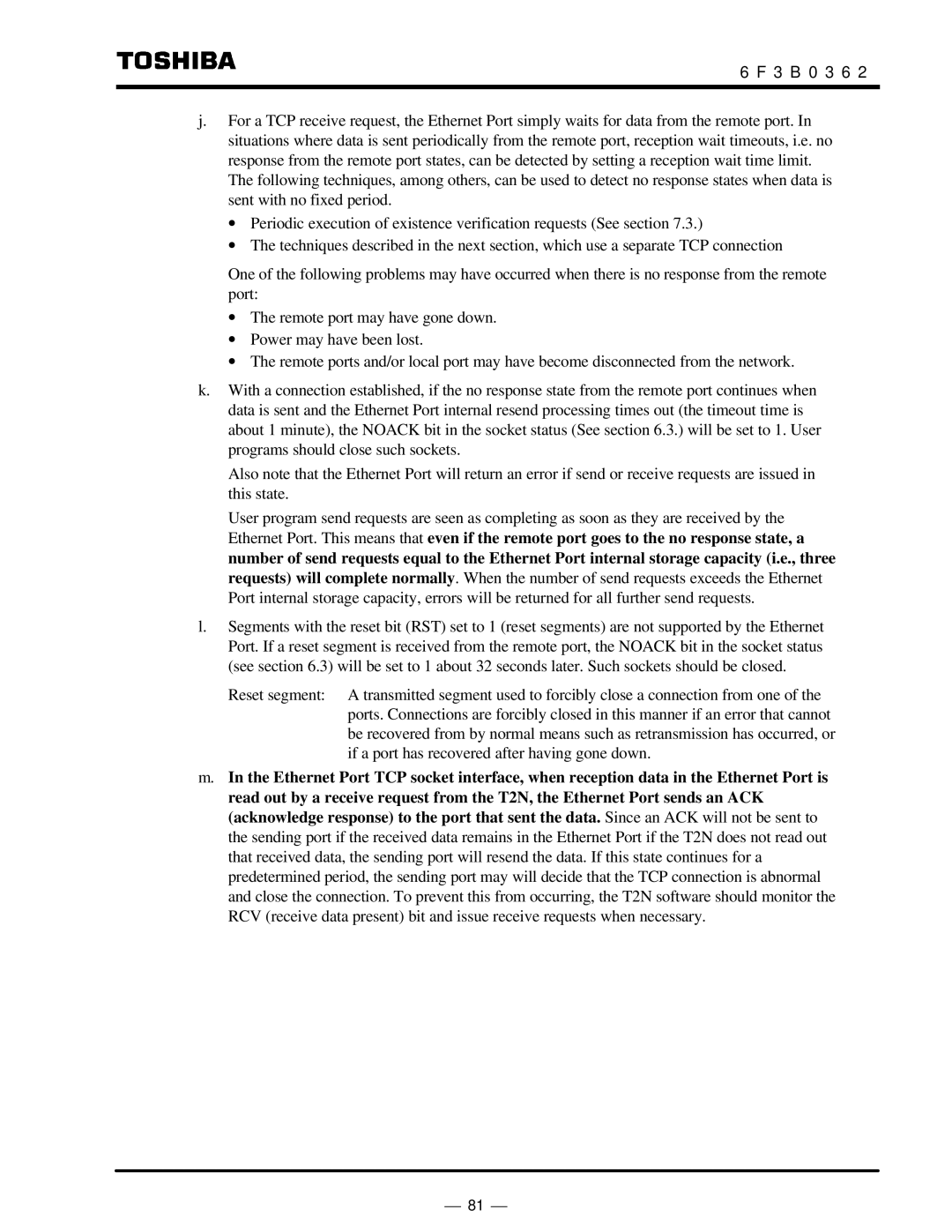
6 F 3 B 0 3 6 2
j.For a TCP receive request, the Ethernet Port simply waits for data from the remote port. In situations where data is sent periodically from the remote port, reception wait timeouts, i.e. no response from the remote port states, can be detected by setting a reception wait time limit. The following techniques, among others, can be used to detect no response states when data is sent with no fixed period.
∙Periodic execution of existence verification requests (See section 7.3.)
∙The techniques described in the next section, which use a separate TCP connection
One of the following problems may have occurred when there is no response from the remote port:
∙The remote port may have gone down.
∙Power may have been lost.
∙The remote ports and/or local port may have become disconnected from the network.
k.With a connection established, if the no response state from the remote port continues when data is sent and the Ethernet Port internal resend processing times out (the timeout time is about 1 minute), the NOACK bit in the socket status (See section 6.3.) will be set to 1. User programs should close such sockets.
Also note that the Ethernet Port will return an error if send or receive requests are issued in this state.
User program send requests are seen as completing as soon as they are received by the Ethernet Port. This means that even if the remote port goes to the no response state, a number of send requests equal to the Ethernet Port internal storage capacity (i.e., three requests) will complete normally. When the number of send requests exceeds the Ethernet Port internal storage capacity, errors will be returned for all further send requests.
l.Segments with the reset bit (RST) set to 1 (reset segments) are not supported by the Ethernet Port. If a reset segment is received from the remote port, the NOACK bit in the socket status (see section 6.3) will be set to 1 about 32 seconds later. Such sockets should be closed.
Reset segment: A transmitted segment used to forcibly close a connection from one of the ports. Connections are forcibly closed in this manner if an error that cannot be recovered from by normal means such as retransmission has occurred, or if a port has recovered after having gone down.
m.In the Ethernet Port TCP socket interface, when reception data in the Ethernet Port is read out by a receive request from the T2N, the Ethernet Port sends an ACK (acknowledge response) to the port that sent the data. Since an ACK will not be sent to the sending port if the received data remains in the Ethernet Port if the T2N does not read out that received data, the sending port will resend the data. If this state continues for a predetermined period, the sending port may will decide that the TCP connection is abnormal and close the connection. To prevent this from occurring, the T2N software should monitor the RCV (receive data present) bit and issue receive requests when necessary.
